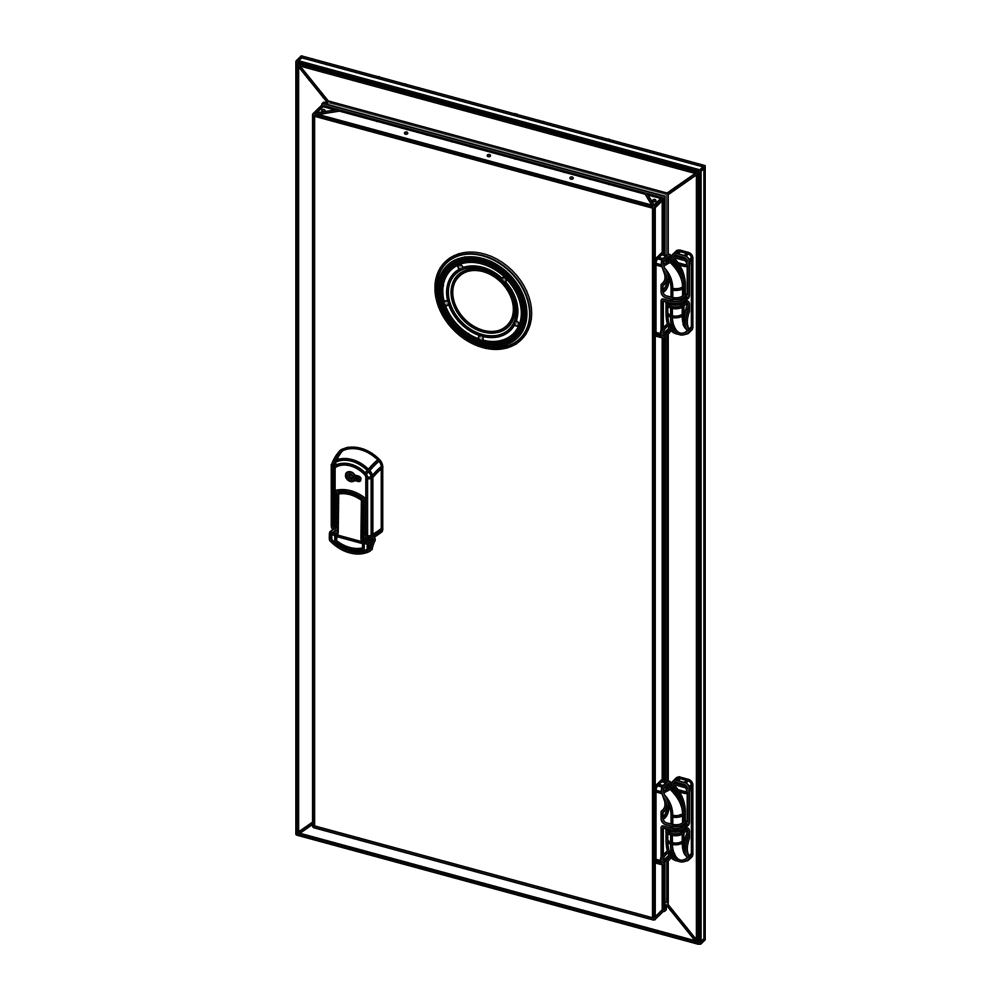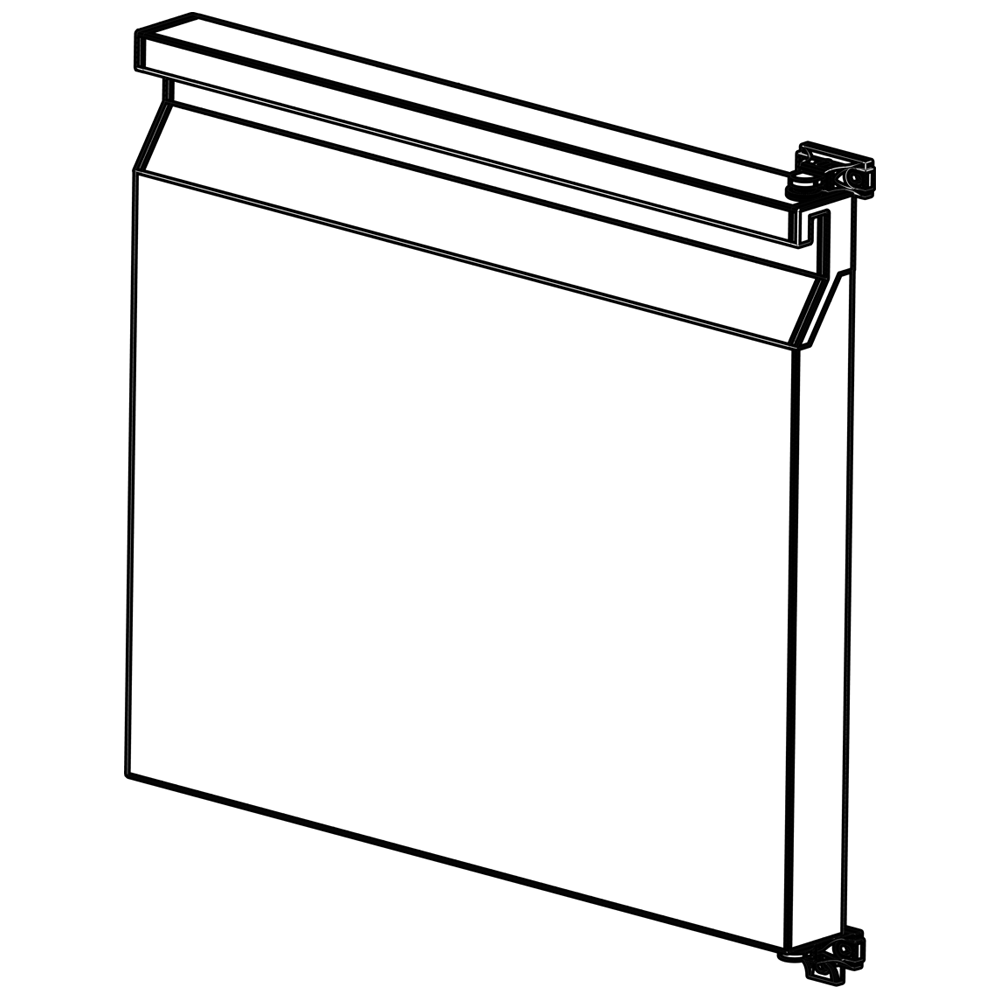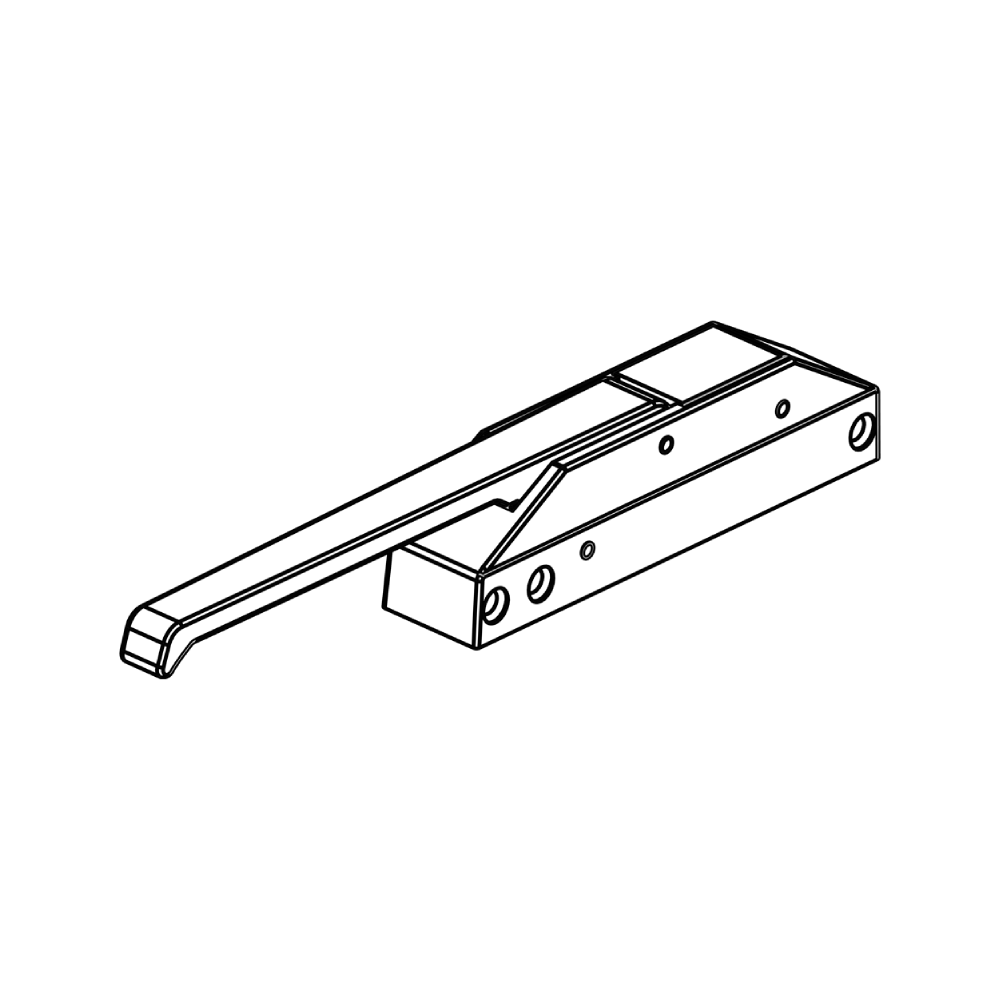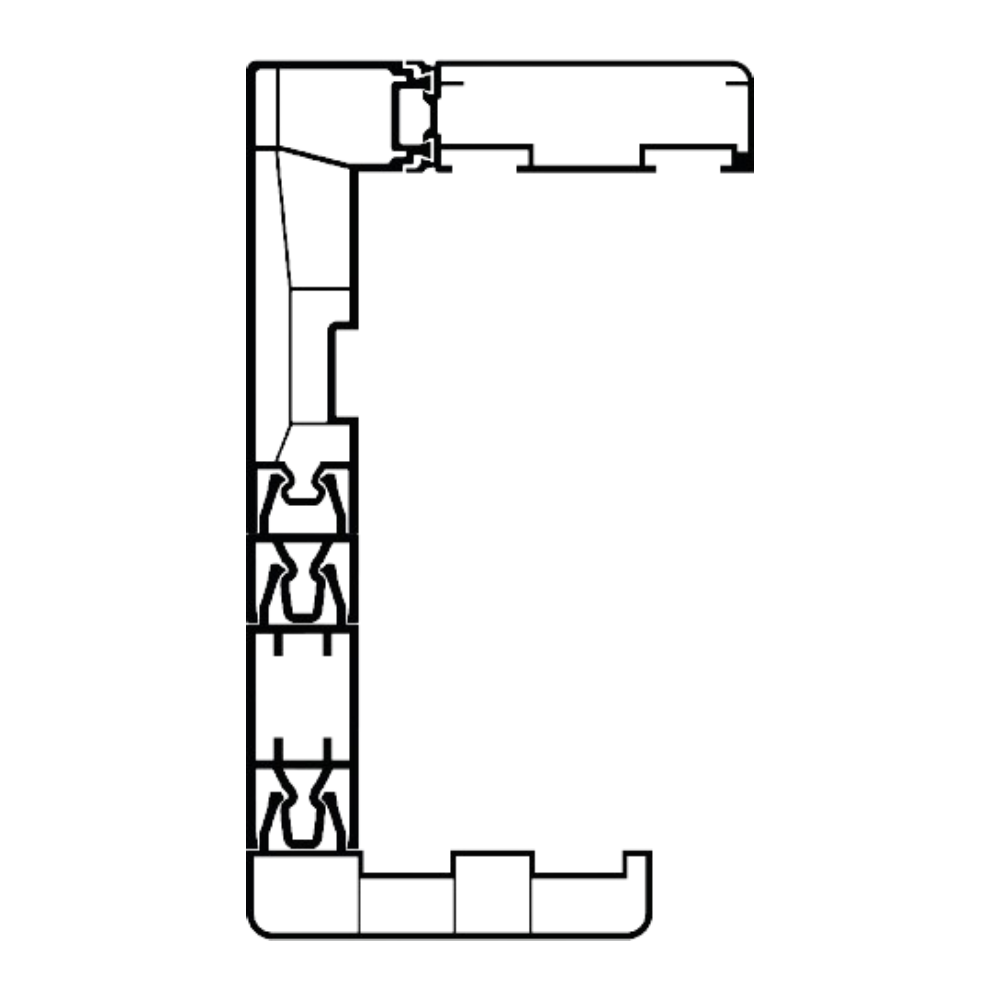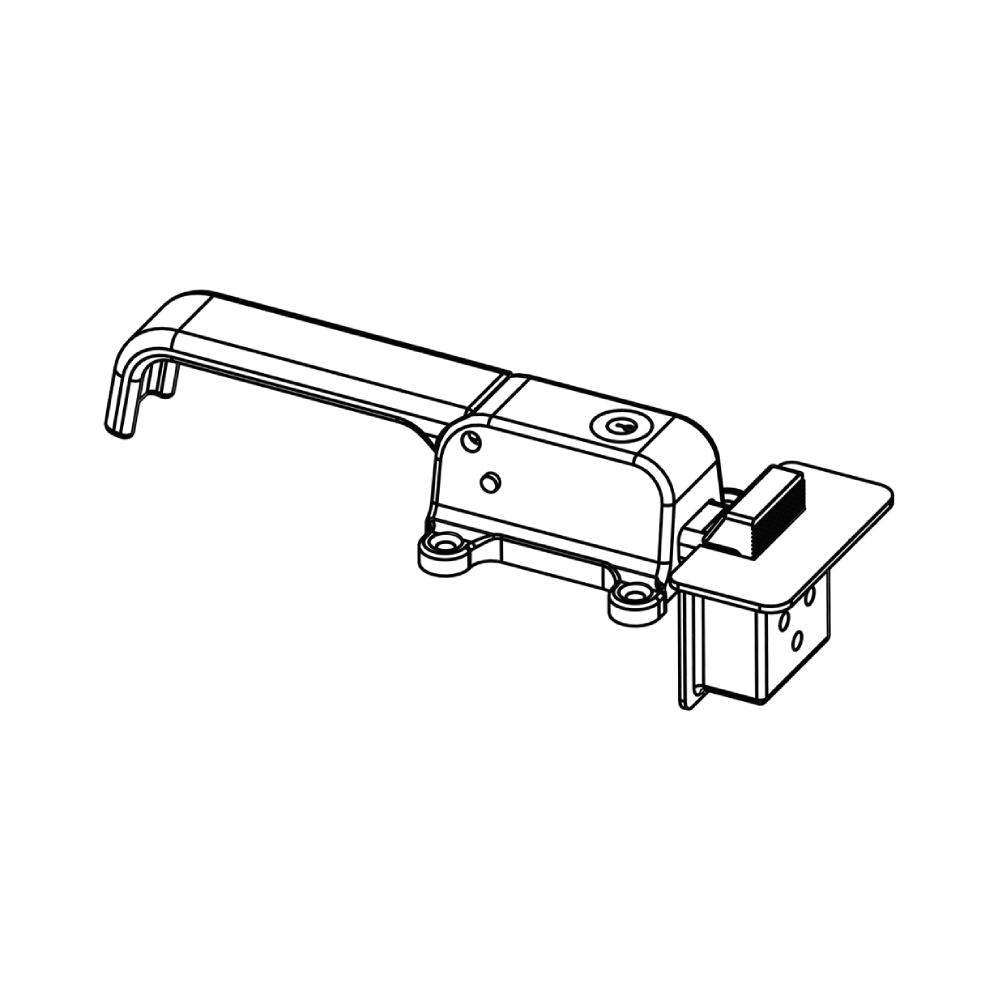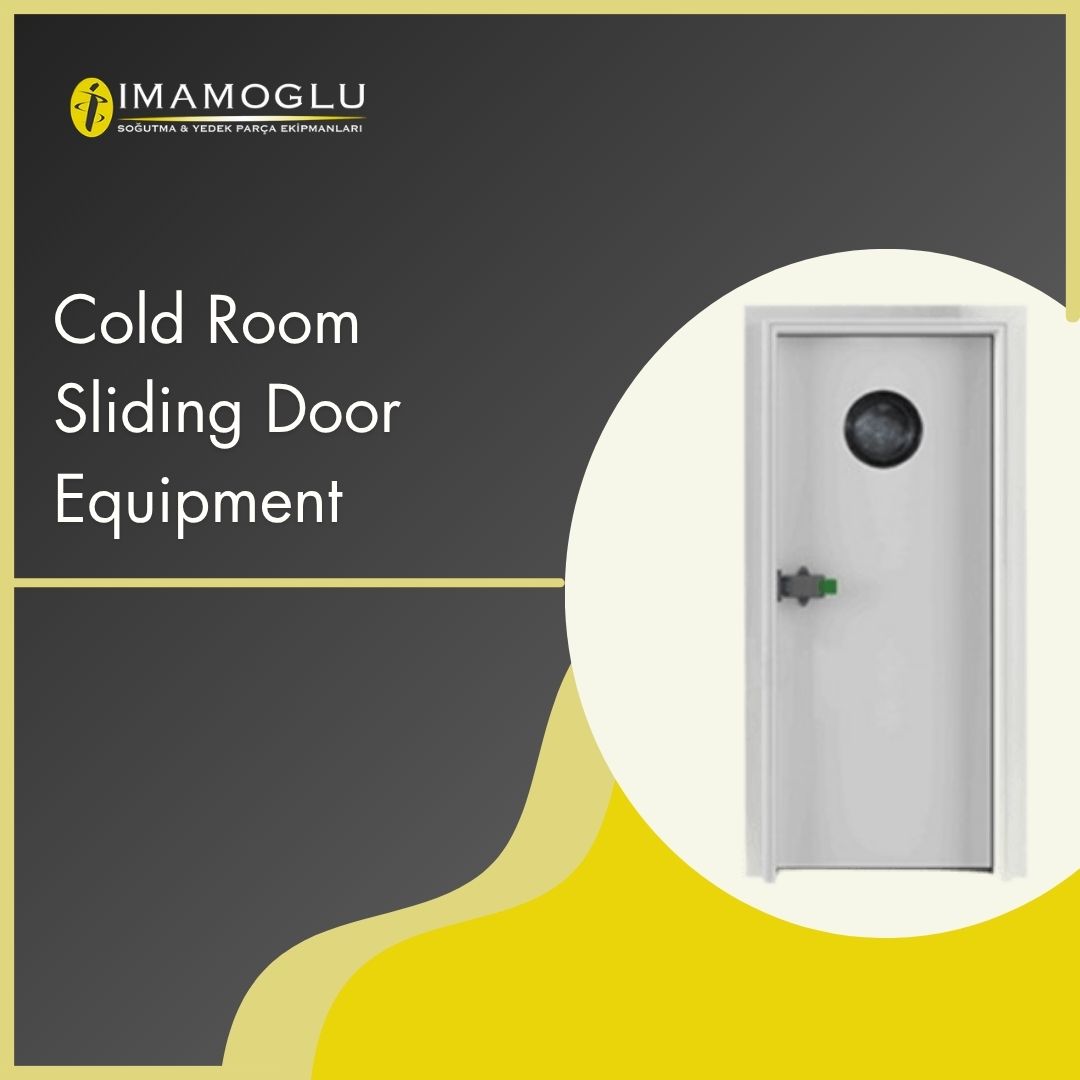Cold Room Sliding Door Equipment
What Are Cold Room Sliding Door Equipment?
Cold Room Sliding Door Equipment Is Specially Designed To Improve The Energy Efficiency And Safety Of Cold Storage Areas. These Equipment Help Maintain The Temperature Inside The Cold Environment While Ensuring The Functionality And Durability Of The Door. Here Are Some Important Components Of Cold Room Sliding Door Equipment:
First, Door Track Systems Stand Out. These Systems Ensure That The Door Opens And Closes Smoothly And Allows Sliding Doors To Move Safely. Quality Rail Systems Are Manufactured From Durable Materials And Offer Long-Lasting Performance.
Secondly, Seals Play A Critical Role. Gaskets Used In Cold Room Sliding Doors Prevent Air Leaks And Reduce Energy Loss. This Reduces Energy Costs By Making Cooling Systems Work Less. Quality Gaskets Are Not Affected By Wear Over Time And Are Long-Lasting.
Automatic Closing Mechanisms Are Also An Important Component. These Mechanisms Allow The Door To Close Automatically And Help Maintain The Interior Temperature. It Also Makes It Easier For Staff To Close The Door When Their Hands Are Full.
What Advantages Do Sliding Door Systems Offer?
Sliding Door Systems Offer Many Advantages In Cold Room Applications. These Doors Provide Various Benefits, Increasing Both Practicality And Efficiency.
First Of All, Sliding Doors Save Space. While Traditional Doors Require A Certain Amount Of Space When Opened, Sliding Doors Slide To The Side, Increasing The Usable Space. This Feature Is A Great Advantage, Especially In Narrow Spaces.
Energy Efficiency Is Also An Important Advantage. Sliding Doors Prevent Cold Air From Escaping By Minimizing Air Leaks. This Allows Cooling Systems To Work Less And Reduce Energy Costs. When Combined With Quality Seals, Sliding Doors Are Effective In Maintaining Temperature Balance.
They Also Offer Ease Of Use. Opening And Closing The Door Can Usually Be Done With One Hand; This Allows Employees To Switch Easily Even When Their Hands Are Full. Automatic Sliding Door Systems Further Increase This Ease Of Use, Thus Reducing The Workload Of Personnel.
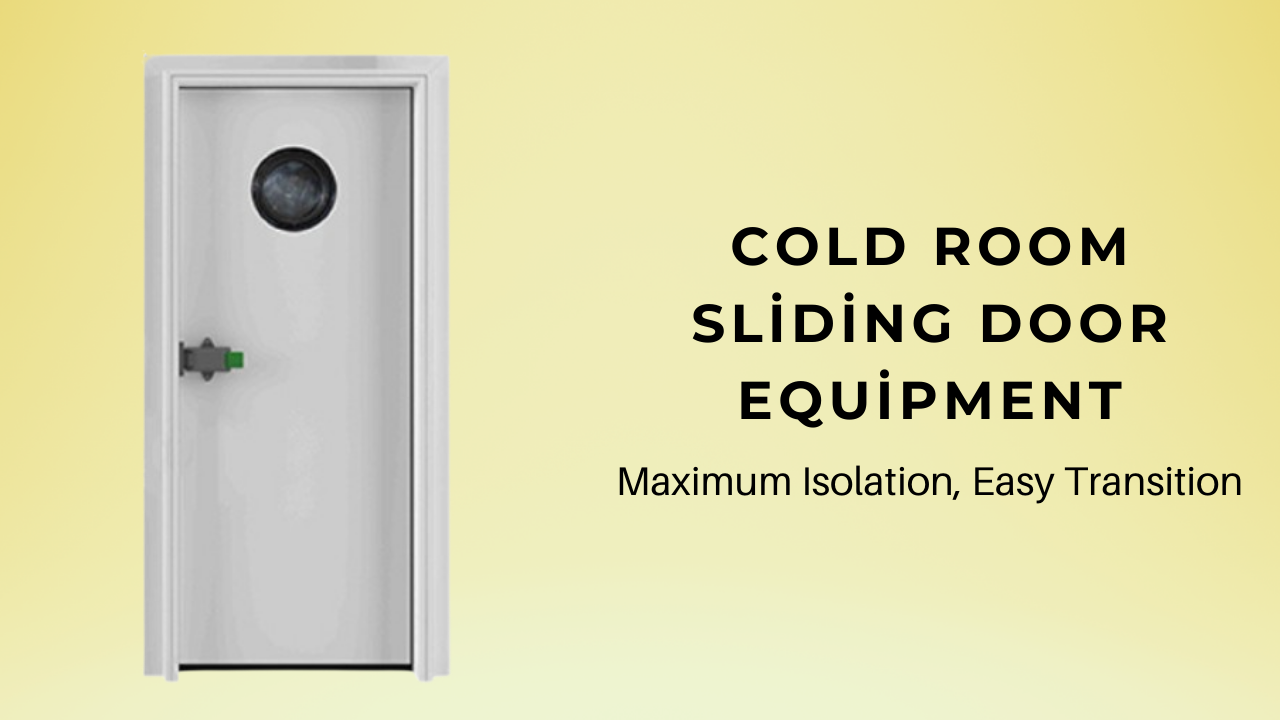
What Should I Pay Attention to When Choosing a Cold Room Sliding Door?
A Few Important Factors To Consider When Choosing A Cold Room Sliding Door Will Help You Increase Both Functionality And Energy Efficiency. Here Are The Factors You Should Consider In This Process:
Firstly, The Material Quality Of The Door Is Of Great Importance. Durable Materials Such As Stainless Steel Or High-Density Polystyrene Offer Long-Lasting Performance Suitable For Cold Room Conditions. The Material Is A Critical Factor That Affects The Durability And Energy Efficiency Of The Door.
Second, Evaluate The Insulation Properties Of The Door. A Quality Door Prevents Energy Loss By Minimizing Air Leaks. This Makes The Cooling System Work Less And Reduces Your Operating Costs.
Door Size And Design Are Other Factors To Consider. Choosing The Appropriate Size Door, Taking Into Account The Density Of Cold Room Entrances And Exits, Facilitates The Workflow. In Addition, Ergonomic Designs Provide Ease Of Use, Accelerating The Transition Of Personnel.
Automatic Closing Mechanisms Increase The Energy Efficiency Of The Door And Provide Ease Of Use. Such Mechanisms Help Maintain Interior Temperature By Ensuring The Door Closes Automatically.
Which Sliding Door Equipment Should Be Preferred for Energy Efficiency?
Choosing The Right Sliding Door Equipment To Ensure Energy Efficiency Not Only Reduces Costs In Cold Room Applications, But Also Minimizes Environmental Impacts. Here Are The Equipment That Should Be Preferred In Terms Of Energy Efficiency:
First, Quality Gaskets Are Important. The Seals Used In Cold Room Sliding Doors Maintain The Temperature Of The Interior Environment By Preventing Air Leaks. In This Way, Cooling Systems Work Less And Energy Is Saved. Choosing Gaskets That Can Withstand Low Temperatures And Last A Long Time Is A Critical Step For Long-Term Efficiency.
Automatic Shut-Off Mechanisms Also Contribute To Energy Efficiency. These Mechanisms Allow The Door To Close Automatically, Preventing Hot Air From Entering. Such Systems Both Provide Ease Of Use And Reduce Energy Loss.
Door Rail Systems Are Another Factor To Consider When Choosing For Energy Efficiency. Quality And Durable Rails Reduce Friction, Ensuring The Door Moves Smoothly. This Makes It Possible To Open And Close The Door With Less Energy.
What Is The Importance Of Gaskets Used In Cold Room Sliding Doors?
Seals Used In Cold Room Sliding Doors Play A Critical Role In Terms Of Energy Efficiency And Maintaining The Temperature Of The Interior Environment. Here Are The Main Reasons That Determine The Importance Of These Gaskets:
First, Seals Prevent Air Leaks. In Cold Room Applications, It Is Vital To Provide Effective Insulation To Maintain The Temperature Of The Internal Environment And Prevent Hot Air From The External Environment. Quality Seals Form A Tight Coating Around The Door, Preventing Cold Air From Escaping And Warm Air From Entering. This Helps The Cooling System Work Less, Thus Reducing Energy Costs.
Secondly, The Durability And Longevity Of Seals Affects The Overall Costs Of The Operation. Gaskets Made Of Materials Resistant To Wear And Tear Offer Long-Term Use Without Loss Of Performance Over Time. This Reduces Maintenance And Replacement Costs.
Additionally, Seals Help Maintain The Hygienic Conditions Of The Interior. When They Provide A Tight Seal, They Prevent Outside Dust, Dirt And Germs From Entering. This Is A Great Advantage, Especially In Sensitive Applications Such As Food Storage.
What Do Sliding Door Mechanisms Do? What Types Are Available?
Sliding Door Mechanisms Are Important Systems That Increase Functionality By Facilitating The Opening And Closing Functions Of Doors. These Mechanisms Are Designed To Provide Both Practicality And Energy Efficiency. Rail Systems Are Used Especially To Ensure That The Door Moves Smoothly. Sliding Doors Save Space By Sliding To The Side, Which Is Especially Useful In Tight Spaces. They Offer Ease Of Use Because They Take Up Less Space Than Traditional Doors. Additionally, When Equipped With Automatic Closing Mechanisms, They Eliminate The Need For Users To Close The Door, Thus Preventing Energy Loss.
There Are Several Types Of Sliding Door Mechanisms. Manual Sliding Mechanisms Are Simple And Low-Cost Solutions That Are Opened And Closed Manually By The User. They Are Generally Preferred In Various Environments. Automatic Sliding Mechanisms Work With Sensors To Allow Users To Pass Through The Door Without Opening It Manually. Such Mechanisms Offer Energy Efficiency And Ease Of Use, Especially In Areas With Dense Traffic.
Aluminum Rail Sliding Mechanisms Offer An Aesthetically Pleasing Appearance As They Are Produced From Light And Durable Materials. They Are Long-Lasting Thanks To Their High Durability. Stainless Steel Sliding Mechanisms Are Frequently Preferred In Food Storage Areas For Durability And Hygiene. They Attract Attention With Their Resistance To Wear And Corrosion. Telescopic Sliding Mechanisms Are Systems In Which Two Or More Doors Move Together; These Mechanisms Are Ideal For Large Entrances And Provide Ample Space When The Doors Are Opened Side By Side.
How to Install Cold Room Sliding Door Equipment?
Installation of Cold Room Sliding Door Equipment Requires Following Certain Steps For A Correct And Effective Installation. This Process Is Critical To Increasing The Functionality And Energy Efficiency Of The Door.
The First Step Is To Obtain The Necessary Materials And Equipment. Installation Usually Requires Components Such As A Door Set, Track Systems, Hinges And Seals. Before Starting The Installation, Make Sure That The Door Opening Area Is Smooth And Clean. Measurements Of The Area Where The Door Will Be Placed Are Important For The Success Of The Installation.
The Assembly Process Begins With The Installation Of The Rail System On The Upper Part Of The Door. The Rails Must Be Placed At A Correct Angle For The Door To Move Smoothly. At This Stage, It Is Important To Follow The Installation Guide And Tighten The Required Screws Correctly. After The Rails Are Assembled, The Door Panel Is Placed By Carefully Sliding It On The Rails.
In The Next Stage, The Hinge System Of The Door Is Installed. Hinges Must Be Positioned Correctly To Ensure The Door Opens And Closes Safely. In This Step, One Of The Most Important Elements To Consider In Hinge Placement Is To Ensure Balance And Smooth Movement Of The Door.
Seals Are Installed Around The Door To Prevent Air Leaks. Using The Correct Seals Increases Energy Efficiency And Maintains The Temperature Of The Indoor Environment. At The Final Stage Of Assembly, Make Sure That Everything Works Properly When The Door Is Opened And Closed. If There Are Any Problems, Necessary Adjustments Should Be Made.
When The Assembly Process Is Completed, Users Are Advised To Check Whether The Assembly Is Smooth. This Process Can Affect The Durability And Functionality Of The Door. Getting Professional Support Can Be Useful To Minimize Difficulties That May Be Encountered During Installation.
Which Lock Systems Are More Secure for Sliding Doors?
Security In Sliding Doors Is Critical For Users To Move In Peace. Therefore, Choosing The Right Lock System Is Very Important. Different Lock Systems Should Increase The Security Of The Door While Also Providing Ease Of Use.
First Of All, One Of The Most Commonly Used Lock Types On Sliding Doors Is Magnetic Lock Systems. These Systems Create A Magnetic Field When The Door Closes And Ensure That The Door Remains Stable. It Offers A Solution That Is Both Practical And Reliable. Additionally, Magnetic Locks Can Often Be Integrated With Electronic Systems, Adding Additional Security Features.
Deadbolt Locks With Locking Mechanism It Is Also Preferred For Security Reasons. In Such Systems, A Lock Mechanism Integrated Into The Hinge System Is Activated When The Door Is Closed. This Makes It Difficult To Open The Door From The Outside. Mechanical Systems Provide Long-Lasting Security Thanks To Their Durable Structures.
Automatic Lock Systems Offer A Practical Solution, Especially In Areas With Busy Transitions. These Systems, Which Automatically Lock When The Door Is Closed, Eliminate The Need For The User To Lock The Door Manually. Such Systems Are Often Also Supported By Security Sensors, Creating An Additional Layer Of Security.
Moreover, Password Or Card Access Systems Is An Effective Way To Increase Security On Sliding Doors. These Systems Ensure That Only Authorized Persons Can Open The Door And Prevent Unauthorized Entry. Electronic Systems Increase User Security And Provide Easy Access.
What Are The Best Material Options For Cold Room Sliding Doors?
Choosing The Best Material For Cold Room Sliding Doors Should Be Made By Considering Important Factors Such As Energy Efficiency, Durability And Hygiene. Stainless Steel Is A Frequently Preferred Material. Thanks To Its Durability And Hygienic Properties, It Resists Wear And Corrosion. This Provides A Critical Advantage In Terms Of Food Safety, Because Stainless Steel Surfaces Attract Attention With Their Ease Of Cleaning.
Aluminum Stands Out With Its Lightness And Durability. It Offers Good Insulation To Ensure Energy Efficiency. Aluminum Doors Are Preferred Because They Offer An Aesthetic Appearance And Are Resistant To External Factors. This Is Especially Important For Cold Room Applications.
Glass Doors Offer The Advantage Of Increasing The Visibility Of Interior Spaces While Providing A Modern Aesthetic. When Double Glazing Systems Are Used To Increase Thermal Insulation, Energy Efficiency Can Also Be Achieved. However, Durability Should Be Taken Into Account When Choosing Glass Doors.
PVC Is A Lightweight Material That Offers An Economical Solution. It Is Frequently Preferred In Food Storage Areas With Its Easy-To-Clean Structure. Care Should Be Taken To Ensure That It Has Appropriate Insulation Properties.
Composite Materials Are Designed To Increase Both Durability And Energy Efficiency By Producing A Combination Of Various Materials. These Doors Can Be Used Outdoors And In Various Weather Conditions.
How Do Automatic Sliding Door Systems Work And What Advantages Do They Offer?
Automatic Sliding Door Systems Offer Both Aesthetics And Functionality As An Indispensable Part Of Modern Architecture. These Systems Automatically Open And Close The Door Through Electric Motors And Sensors. It Makes It Easier For Users To Get Through The Door When Their Hands Are Full Or On The Go.
The Working Principle Of These Systems Is Quite Simple. A Rail And Motor Placed At The Top Of The Door Are The Basic Components That Enable The Door To Slide. When The Door Is Intended To Be Opened, Motion-Detecting Sensors Are Activated And The Motor Allows The Door To Slide On The Rail. The Door Remains Open For A Predetermined Time And Then Closes Automatically. This Process Is Important For Security; Because The Sensors Stop When They Detect Any Obstacle At The Moment Of Closing The Door, Thus Preventing Users And Objects From Being Damaged.
Automatic Sliding Door Systems Have Many Advantages. First, It Provides Ease Of Access. It Offers Great Convenience, Especially For Disabled Individuals And The Elderly. Additionally, It Increases User Comfort As There Is No Need For Physical Effort To Open The Door. However, Automatic Doors Are Also Beneficial In Terms Of Energy Efficiency. Since The Doors Are Opened Only When Necessary, It Minimizes The Interior's Exposure To Heat And Cold Weather.
They Are Also Striking From An Aesthetic Point Of View. While Their Stylish Designs Enrich The Appearance Of Modern Buildings, They Also Positively Affect Users' Interaction With The Space. It Is Preferred In Busy Transit Areas In Workplaces And Shopping Malls; This Improves The Customer Experience.
What Are The Spare Parts Used In Cold Room Sliding Doors?
Cold Room Sliding Doors Require Various Spare Parts For The Door To Function Properly And Have A Long Life. These Parts Increase Both Safety And Functionality. The Most Commonly Used Replacement Parts Include Rail Systems, Hinges, Door Handles And Seals.
Rail Systems Ensure That The Sliding Door Slides Smoothly. These Rails Play A Critical Role In The Door's Opening And Closing Motion. Since It Can Wear Out Over Time, It Is Important To Check It Regularly And Replace It When Necessary.
Hinges Ensure The Stability Of The Door And Make It Easier To Open And Close. Especially In Heavy Doors, The Use Of Durable And High-Quality Hinges Ensures That The Door Functions Safely.
Door Handles Are Important Components That Enable Users To Open And Close The Door. It Can Be Found In Different Designs And Materials. Since They May Wear Out Over Time, They Should Be Replaced With New Ones When Necessary.
Seals Increase Energy Efficiency In Cold Room Doors And Maintain The Temperature Of The Interior. Choosing Long-Lasting Gaskets Prevents Cold Air From Leaking And Thus Saves Energy. Since Seals Can Also Wear Out Over Time, It Is Important To Check Them Regularly And Replace Them When Necessary.
Door Lock Systems Are Another Spare Part Used To Increase Security. Different Types Of Lock Systems Ensure Security By Preventing The Door From Being Opened From The Outside.
What Should I Pay Attention To While Ensuring The Balance Of Price And Quality?
Ensuring The Balance Of Price And Quality Is Very Important In Products That Require Investment, Such As Cold Room Equipment Or Sliding Door Systems. There Are A Few Key Factors You Need To Pay Attention To When Striking This Balance.
First, Determining Your Needs Is A Critical Step. Considering Your Intended Use And Environmental Conditions, Clarify What Features You Are Looking For. For Example, Criteria Such As Energy Efficiency, Durability And Hygiene Should Be A Priority For Cold Room Equipment.
Before Purchasing Products, Conduct Market Research And Compare The Prices And Features Of Different Brands. Remember That There May Be Price Differences Between Products With Similar Features. A High Priced Product May Not Always Offer The Best Quality; Therefore, Make An Informed Choice By Considering User Reviews And Professional Reviews.
Material Quality Is Also An Important Element That You Should Take Into Consideration. The Durability Of The Materials Used Extends The Life Of The Product And Reduces Costs In The Long Run. Quality Materials Such As Stainless Steel Or Aluminum Often Require A Higher Initial Cost, But Can Be More Economical In Long-Term Use.
Warranty And After-Sales Support Play An Important Role In Ensuring The Balance Of Price And Quality. Warranty Periods And Technical Support Services Offered By Manufacturers Provide Information About The Quality Of The Product. A Long Warranty Period Increases Confidence In The Quality Of The Product.
While Balancing Price And Quality, You Need To Clarify Your Needs, Conduct Market Research, Consider Material Quality And Check Warranty Periods. By Taking These Factors Into Consideration, You Can Protect Both Your Budget And Your Long-Term Satisfaction. For More Information Imamoglu.com.tr You Can Visit The Address.


